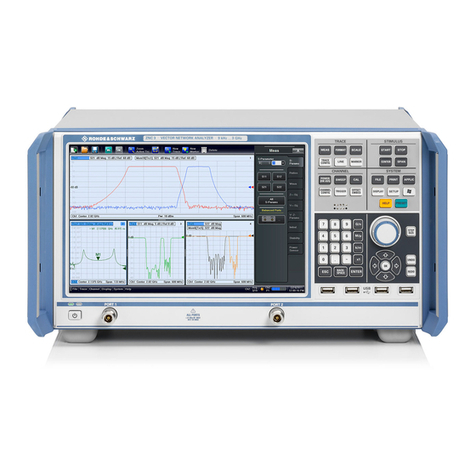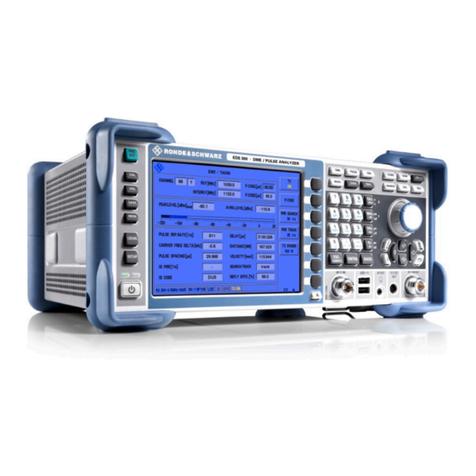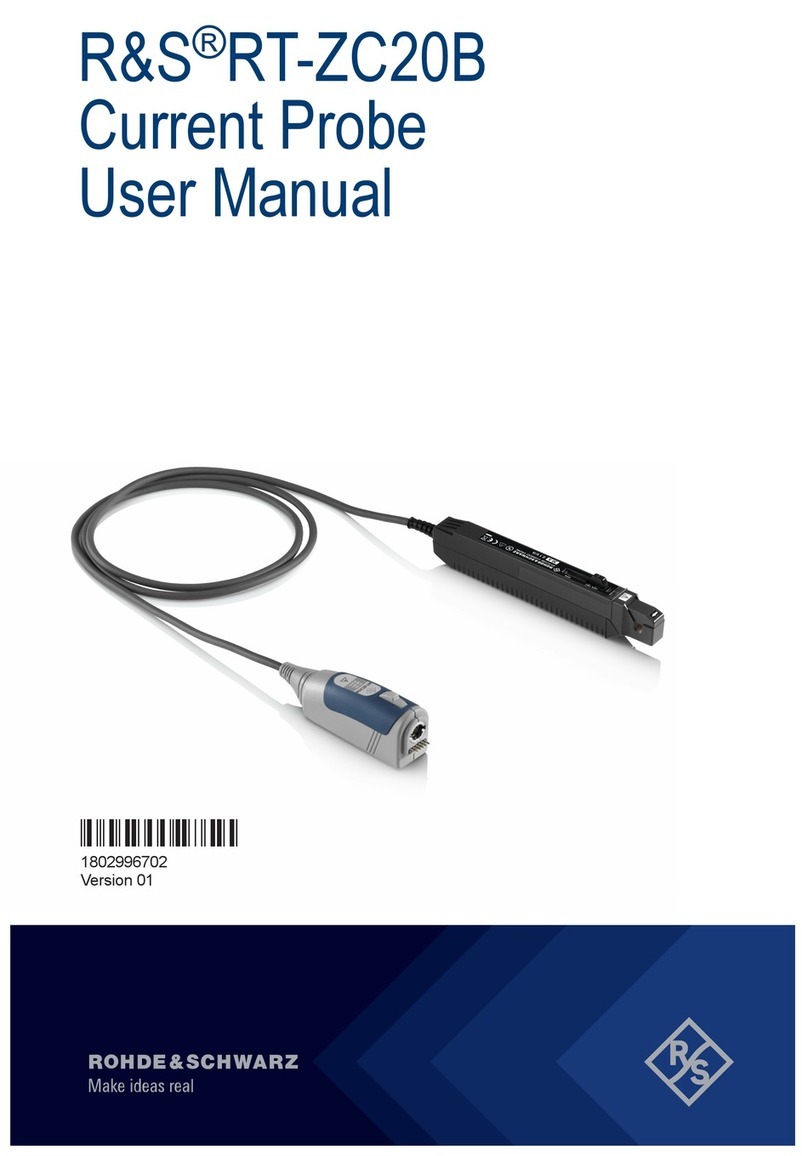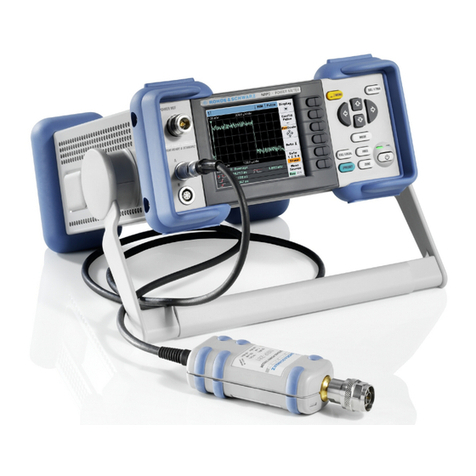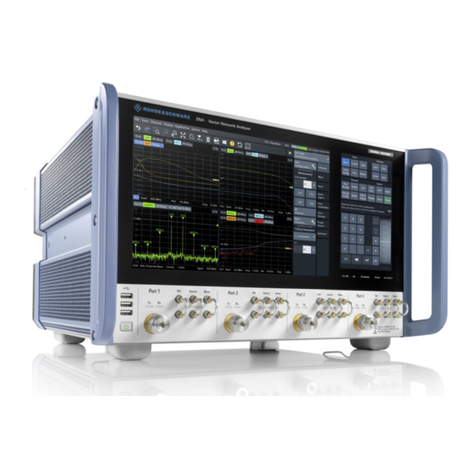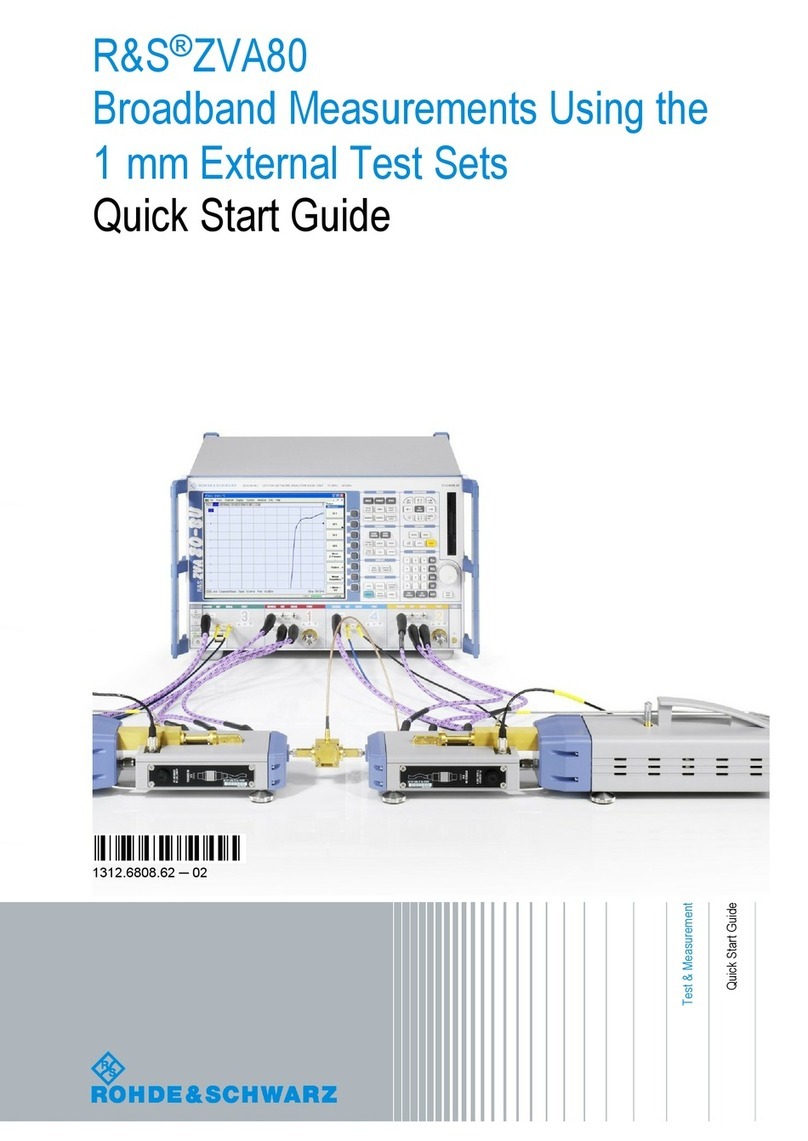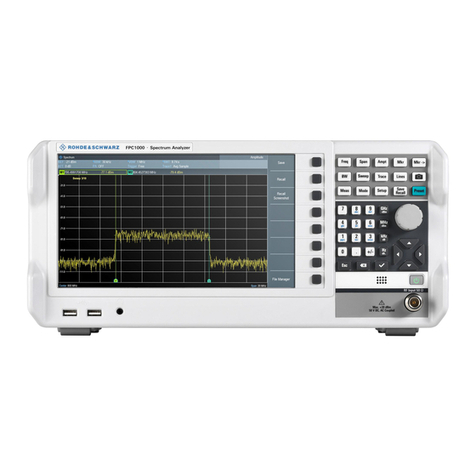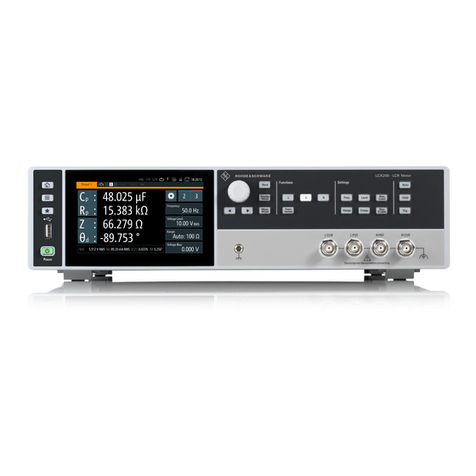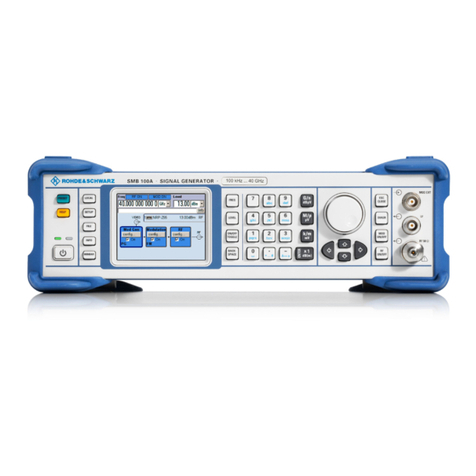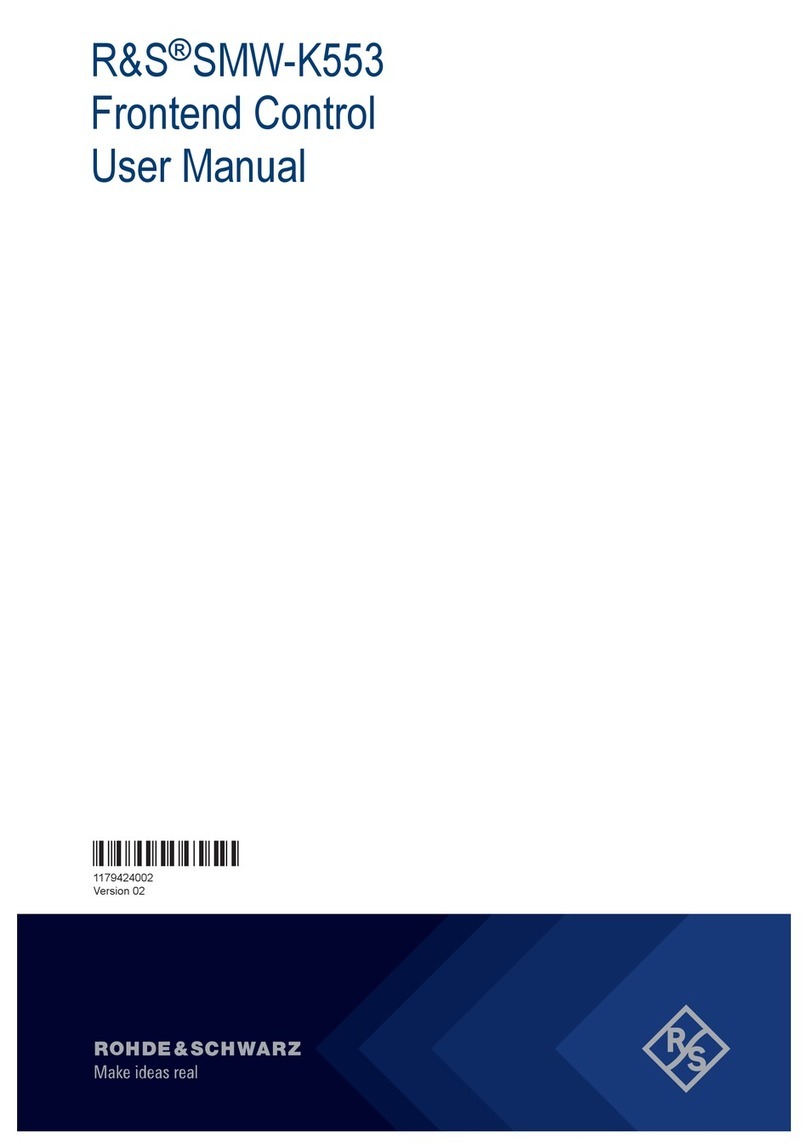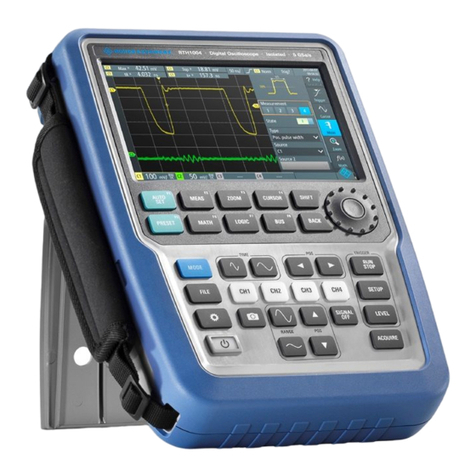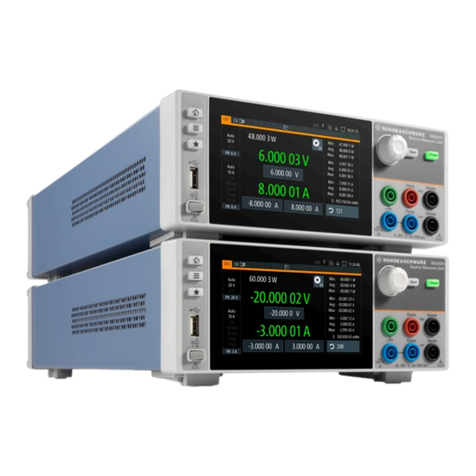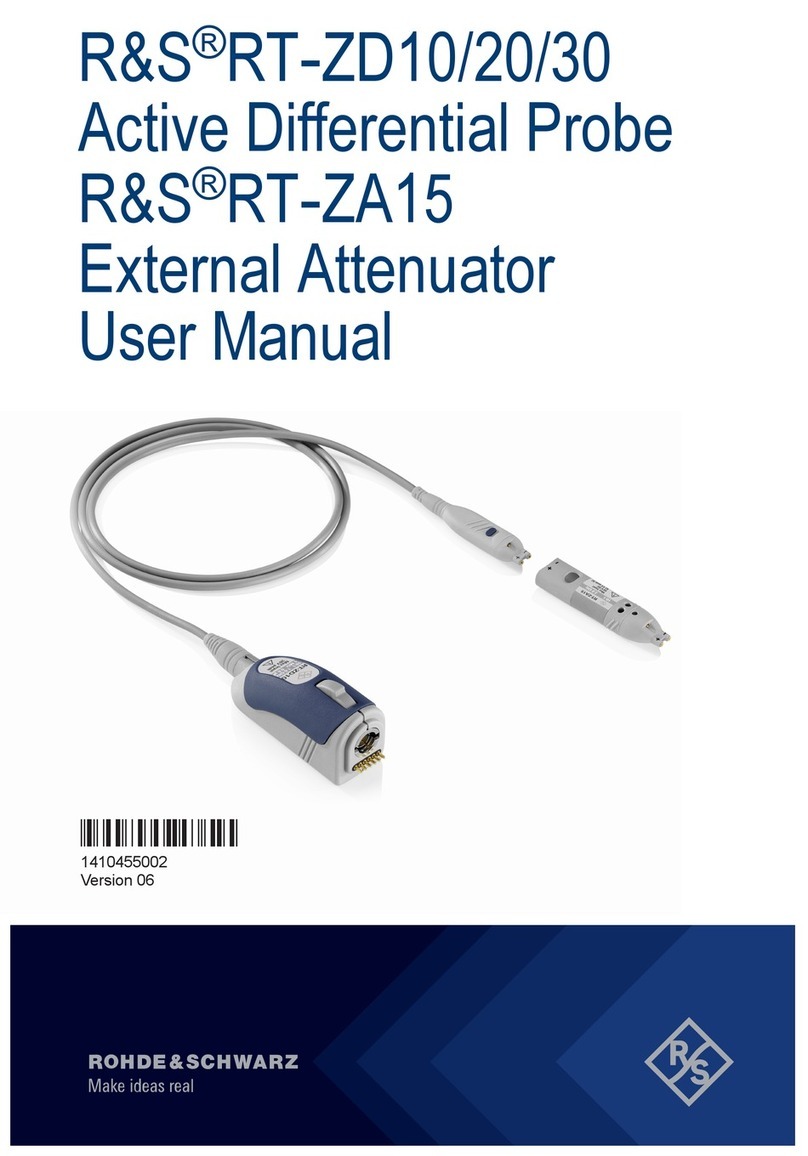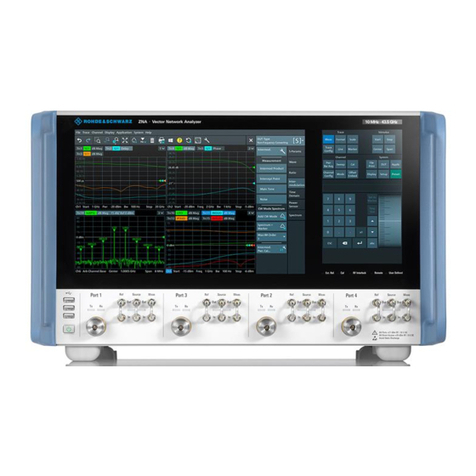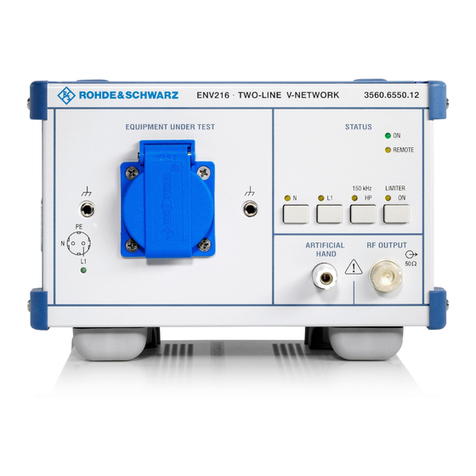
Safety Instructions
R&S® ZVAX24
5Quick Start Guide 1312.7985.62 ─ 03
1 Safety Instructions
This R&S ZVAX24 extension unit has been designed and tested in accordance with the
EC Certificate of Conformity and has left the manufacturer’s plant in a condition fully
complying with safety standards.
General safety instructions
To maintain this condition and to ensure safe operation, you must observe all instructions
and warnings given in this Quick Start Guide: Please notice in particular the instructions
below on this page and in chapter 2.
RF Connection
The extension unit is intended to be operated with an R&S ZVA24 network analyzer. The
maximum RF input powers of the extension unit are beyond the RF output power range
of the R&S ZVA24, so there is no risk of damage if it is connected to the test ports with
no external amplifiers or other active devices in the test setup. Notice, however, the
following items:
●Always connect the extension unit as described in chapter 2.1.3, "RF Connectors",
on page 8.
●The "High Power Coupler Port 1 / 2" options (R&S ZVAX24-B91 / -B92) extend the
source power range at port 1 and the receiver power range at port 2. External ampli-
fiers may be used to boost the RF powers. Notice the maximum RF powers of the
extension unit and the network analyzer quoted in the data sheets. Moreover, observe
that maximum RF powers are allowed only if the following conditions are fulfilled:
– The quoted power handling capability refers to the couplers only. In order to pre-
vent damage to other components of the extension unit and/or the network ana-
lyzer, the use of external attenuators and/or isolators may be necessary.
– None of the options R&S ZVAX-B203, "Low Noise Preamplifier", R&S ZVAX-
B252, "Harmonic Filter Source Port 2", and R&S ZVAX-B272, "Pulse Modulator
Source Port 2", is switched into the RF signal path of port 2.
– The signal fed in at the 3.5 mm test port connectors of the high power couplers
must not contain a DC offset, as this may impair the measurements and even
cause damage to the extension unit.
●Observe the maximum nominal input power of the "Low Noise Preamplifier" quoted
in the R&S ZVAX24 data sheet.
ESD Protective Measures
To protect the extension unit against damage due to Electrostatic Discharge (ESD) use
the wrist strap and grounding cord supplied with the network analyzer and connect your-
self to the GND connector at the front panel. For details refer to the Quick Start Guide of
your analyzer.












